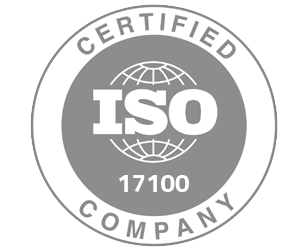
When You Should Use Machine Translation—and When You Shouldn’t
Not all content is created equal—and neither is the way we translate it. As global communication accelerates and multilingual demands grow, machine translation (MT) has emerged as both a time-saver and a strategic tool. But while MT offers speed and scalability, it doesn’t always offer precision, nuance, or security. The real challenge lies in knowing when machine translation is enough, when human expertise is essential, and when a smart combination of both delivers the best results. In this blog, we break down when MT works well, and where it struggles.
When Machine Translation Is Useful
1. High-Volume, Low-Risk Content
If you have large amounts of content that are not mission-critical, MT is a practical solution. Think of internal documents, product listings, or user-generated content on e-commerce sites. These texts often follow a predictable structure and don’t require a polished human voice.
For example, a marketplace with thousands of short product descriptions in multiple languages can benefit from MT. These texts are not emotionally charged or legally binding, and customers generally expect concise, factual information.
2. Real-Time or Instant Communication
Chatbots, live customer service, and instant messaging platforms often use MT to break language barriers in real time. This is especially helpful for basic inquiries or initial conversations.
A travel app, for instance, might use MT to help users communicate with taxi drivers or hotel staff abroad. While these translations are not perfect, they are often "good enough" for basic interaction.
3. Research and Information Gathering
Professionals often use MT to scan foreign-language materials for relevance before deciding whether a full translation is needed. For example, researchers or journalists might use MT to get a general sense of an article, white paper, or social media trend in another language.
In such cases, the goal is comprehension, not publication—making MT an efficient first step in the workflow.
4. Cost and Time Constraints
When budgets are limited or deadlines are tight, MT can act as a stopgap measure. Some businesses use machine translation followed by light human editing—also known as Machine Translation Post-Editing (MTPE)—to speed up delivery while improving output quality.
This hybrid model is particularly useful for industries like e-commerce, travel, and tech support, where content needs constant updating.
When Machine Translation Falls Short
Despite its advantages, MT has clear limitations—especially in terms of accuracy, tone, and context.
1. Legal, Medical, and Technical Documents
High-stakes documents should never rely solely on MT. In legal contracts, a single mistranslated clause can lead to disputes or liabilities. Similarly, incorrect medical translations can endanger patient safety.
Even technical documentation requires precise language. A wrongly translated instruction manual for industrial machinery could lead to misuse or damage.
In all these cases, human translators with subject-matter expertise ensure that terminology, intent, and regulatory standards are met.
2. Marketing and Brand Communication
Marketing texts are nuanced. They involve creativity, emotion, and persuasion—qualities MT still struggles with. A campaign slogan, for example, might make sense linguistically in another language but fail to resonate culturally or emotionally.
Consider the classic example of Pepsi’s mistranslation of its slogan “Come alive with the Pepsi generation” into Chinese. The machine-generated version allegedly conveyed “Pepsi brings your ancestors back from the dead.” Whether myth or fact, it highlights the importance of cultural sensitivity and human oversight.
3. Creative and Literary Content
Poems, books, movie subtitles, and scripts require context, emotion, and stylistic choices that machines can’t replicate. MT lacks the ability to understand irony, humor, or figurative language.
Literary and audiovisual content often carries cultural references that require localization, not just translation. Only human linguists can interpret the deeper layers of meaning and adapt them appropriately for the target audience.
4. Multilingual SEO and Web Localization
Search engines are language-sensitive. A literal machine translation of a keyword may not align with how native users search online. For example, the word “lawyer” may be translated differently in various Spanish-speaking countries depending on local usage (“abogado” vs. “letrado”).
A website aiming to perform well in international markets needs carefully localized content that uses natural phrasing, local keywords, and culturally relevant messaging—something that only human translators can achieve effectively.
When to Use a Blend of Machine and Human Translation
A blended approach—Machine Translation followed by Post-Editing (MTPE)—can be highly effective when you need to balance speed, cost, and acceptable quality. This model works best for medium-risk content such as FAQs, product guides, or internal documentation where accuracy matters but full creative or legal precision isn’t required. However, even in blended workflows, confidentiality must be maintained. Trusted translation agencies use secure, private MT engines and ensure that post-editors are experienced linguists under strict confidentiality agreements. This way, clients benefit from faster turnaround times and lower costs while maintaining control over sensitive data and ensuring professional-level quality.
Machine translation has become a valuable resource in managing multilingual content efficiently, especially when dealing with high volumes and tight timelines. However, its effectiveness depends largely on the content’s complexity, purpose, and sensitivity. While MT serves well for straightforward, low-risk communication, human expertise remains essential for nuanced, creative, or high-stakes materials. In many cases, a blended approach that incorporates both technologies and professional linguists offers a balanced solution.







